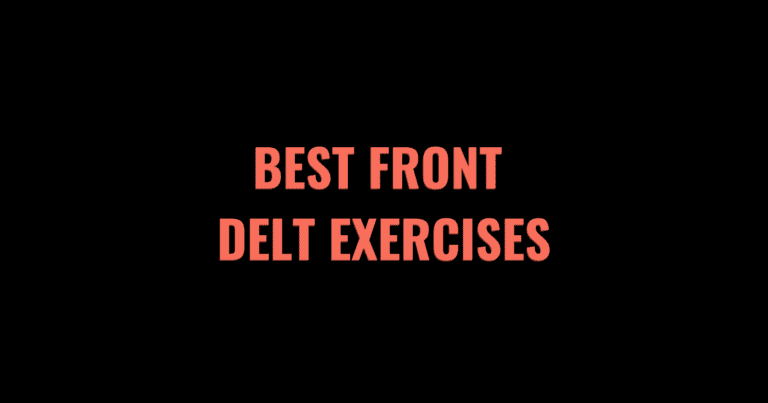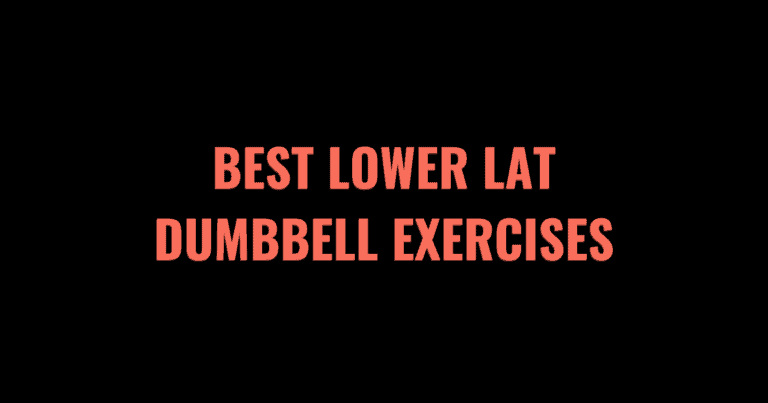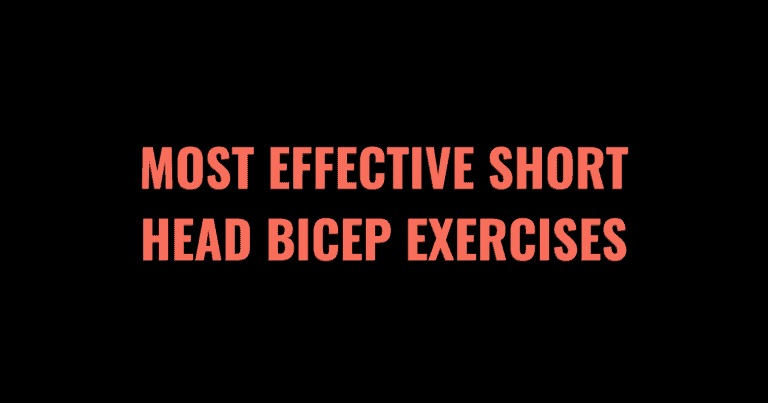If you’ve been lifting for a while, you’ve likely come across the famous push/pull-legs workout split. But what exactly do these terms mean? What is the purpose of pulling exercises? What are the best pull exercises you can do with just a barbell?
We’ll explain the function of pull exercises, how they work, and do a deep dive into the best pull exercises that use a barbell.
Table of Contents
- 1 The 9 Best Barbell Pull Exercises
- 2 FAQs
- 3 Other Muscle Groups Exercises
- 3.1 The 7 Best Outer Quad Exercises (2023)
- 3.2 The 8 Best Front Delt Dumbbell Exercises
- 3.3 The 7 Best Cable Glute Exercises
- 3.4 The 10 Best Front Delt Exercises
- 3.5 The 7 Best Cable Forearm Exercises
- 3.6 The 6 Best Cable Hamstring Exercises
- 3.7 The 7 Best Lower Lat Dumbbell Exercises
- 3.8 The 9 Best Short Head Bicep Dumbbell Exercises
- 3.9 The 8 Best Rear Delt Bodyweight Exercises
- 3.10 The 8 Best Bicep Cable Exercises
- 3.11 The 7 Best Medial Head Tricep Exercises
- 3.12 The 7 Best Lower Trap Exercises
- 3.13 The 8 Best Long Head Tricep Exercises
- 3.14 10 Best Cable Shoulder Exercises
- 3.15 The 8 Best Short Head Bicep Exercises
The 9 Best Barbell Pull Exercises
- Barbell Deadlifts
- Barbell Bent Over Rows
- Pendlay Rows
- Barbell Yates Rows
- Barbell Shrugs
- Barbell Bicep Curls
- Good Mornings
- Barbell Romanian Deadlifts
- Rack Pulls
1. Barbell Deadlifts
Benefits of Barbell Deadlifts
The barbell deadlift is the king of all lower-body exercises. Deadlifts engage every muscle in your posterior chain, work both your upper body and lower body muscles, and promote muscle growth and functional fitness.
Barbell deadlifts teach you to safely lift heavy objects from the ground, making them ideal for functional fitness and activities of daily living. The barbell deadlift should be incorporated into your workout routine to improve your posture and build muscle mass and strength.
How to Perform Barbell Deadlifts
- Set up your barbell with bumper plates on each side so that the barbell is nine inches off the floor.
- Plant your feet hip-width apart at the center of the barbell. Either point your feet straight ahead or turn them out a few degrees.
- With a slight bend in your knees, reach forward to grab the barbell with an overhand (pronated) grip. Your hands should be shoulder-width apart and face your torso.
- Pull your shoulder blades back and brace your core muscles. Lift your chest and pre-tense the bar until your arms are straight and your hips are lower than your shoulders.
- Keep your gaze directed at the ground about 10 feet in front of you to keep a neutral spine and neck position.
- Take a deep breath and tense all your muscles. There should be no slack in the bar.
- Keep your arms straight, drive your feet into the ground hard, and extend your knees at the hips. Your body should move in one fluid motion. Don’t lift your hips faster than you straighten your knees, as this can cause lower back strain.
- When your knees straighten, and your hips extend, drive your hips forward to lock out the exercise.
- Keep your chest, arms, and core engaged. Slowly bend your knees and hips to lower the barbell to the ground.
- Repeat for the desired number of sets and reps.
Learning to deadlift correctly can take some time, but it is well worth it. This video from the National Academy of Sports Medicine shows how to deadlift with proper technique.
2. Barbell Bent Over Rows
Benefits of Barbell Bent Over Rows
Barbell rows are a fantastic upper body compound exercise for your lats, biceps, and stabilizing muscles in your posterior chain. The barbell bent over row is among the most effective horizontal pulling exercises. It strengthens your entire upper body and engages your hamstrings and glutes through an isometric hip hinge position.
See more barbell row benefits.
How to Perform Barbell Bent Over Rows
- Stand up tall with your feet hip-width apart, and your knees slightly bent.
- Grab a barbell with a pronated grip and position your hands slightly wider than shoulder-width.
- Brace your abdominals and push your hips backward until you feel a stretch in your hamstrings and your torso is almost parallel to the floor. Keep this hip hinge position throughout your set.
- Pull your shoulder blades back and down. Keep your gaze looking at the floor to keep a neutral upper spine.
- Squeeze your lats and engage your biceps to pull the barbell toward your navel. Stop when the barbell grazes your abdomen and your arms form a 90-degree angle.
- Slowly extend your arms to return the barbell to its starting position. Your arms should fully extend between reps to achieve a full range of motion.
- Repeat for the desired number of sets and reps.
Watch this video for a demonstration of the bent-over barbell row. You can also do bent-over barbell rows with a supinated (underhand grip) to target more of your biceps and less of your lats.
4. Pendlay Rows
Benefits of Pendlay Rows
Weightlifting coach Glenn Pendlay developed the Pendlay row to build strength and power in the back pulling muscles. The Pendlay row is a variation of the barbell row that begins from a dead stop on the ground, forcing you to generate explosive power for each rep.
Pendlay rows give your lower back a break between reps rather than holding a static hip hinge position like the traditional barbell row.
This row variation is excellent compound back exercise for people with lower back issues who still want to lift heavy weights to build their posterior chain.
How to Perform Pendlay Rows
- Load a barbell and stand behind the center of the bar with your feet hip-width apart and your knees slightly bent.
- Keep your back straight and hinge at your hips to reach down and grab the bar with a pronated grip. Your hands should be just wider than shoulder width.
- Brace your abdominals, glutes, and hamstrings. Pre-tense the bar so there is no slack and your whole posterior chain is engaged.
- Pull your shoulder blades down your back. Keep your gaze down to keep a neutral neck and upper spine.
- Squeeze your lats and pull the barbell towards your stomach with as much explosive power as possible. Your elbows should travel straight behind your torso.
- Return the barbell to the ground with control. Reset so there is no momentum in the barbell.
- Repeat steps 3 – 6 for as many reps as desired.
- Reset and repeat from step 1 for each set.
Here is a helpful video from Scott Herman Fitness showing tips for the correct form for a Pendlay row and how to avoid common mistakes.
If you don’t enjoy the feel of a Pendlay row, check out this list for the best alternatives to Pendlay rows.
5. Barbell Yates Rows
Benefits of Barbell Yates Rows
Barbell Yates rows are the namesake of bodybuilding legend and six-time Mr. Olympia Dorian Yates. Yates was famous for his impressively muscular back, credited to this version of a bent-over row. Yates rows engage your lats, rhomboids, traps, rear delts, biceps, and spinal erectors. If you want to build a bigger back, Yates rows are absolutely worth your consideration.
Instead of hinging your hips until your torso is parallel to the ground, Yates rows have you tilt your back at 45 degrees. Yates rows place less strain on your lower back, allowing you to lift heavier weights more safely.
How to Perform Barbell Yates Rows
- Set up your barbell in a power rack at mid-shin height. You can also deadlift the bar from the ground. Grip the barbell with a supinated (underhand) grip with your hands shoulder-width apart and your feet firmly planted at hip-width distance.
- Keep a slight bend in your knees. Pull your shoulders back and brace your abdominals.
- Hinge your hips until you are leaning forward at about 45 degrees. Keep a neutral neck and upper spine by looking at the ground a few feet in front of you.
- Drive your elbows behind your torso to lift the barbell to your sternum. Keep your elbows tucked close to the body.
- Lock the movement out by squeezing your lats together, then slowly extend your arms to release the barbell to its starting position.
- Repeat for the desired number of sets and reps.
Check out this video from Bodybuilding.com for a demonstration.
6. Barbell Shrugs
Benefits of Barbell Shrugs
Barbell shrugs isolate your traps, creating a stronger upper back and a more muscular physique. Your traps are essential for heavy compound lifts like deadlifts and bench presses. Well-developed traps prevent injuries to your upper spine and neck and provide a thick ‘shelf’ for a barbell to rest on during heavy squats.
How to Perform Barbell Shrugs
- Stand behind a barbell with your feet a few inches wider than hip-width and pointed outward slightly. Bend down and grab the barbell with an overhand grip with your hands slightly wider than shoulder distance.
- Keep your chest lifted and your back straight. Push your hips forward slightly in your starting position.
- Hinge forward slightly and keep your shoulder blades neutral.
- Shrug your shoulders together and squeeze the shoulder blades together. Squeeze your traps as hard as possible at the top of each rep.
- Lower the barbell back to its starting position slowly and with control.
- Repeat for the desired number of sets and reps.
Check out this video from Bodybuilding.com for a demonstration.
7. Barbell Bicep Curls
Benefits of Barbell Bicep Curls
The bicep curl is a classic exercise. Isolating your biceps makes your arms look thicker and more muscular. Your biceps are involved in most upper-body pull exercises like the deadlift, barbell rows, and pull-ups. Strong and functional biceps are essential for these compound lifts.
How to Perform Barbell Bicep Curls
- Stand tall with your feet hip-width apart and a barbell in your hands with a supinated grip. Your hands should be around shoulder width. The ideal grip width depends on biomechanics, so experiment and find what works best.
- Keep your chest up and your back straight. Brace your abdominals and grip the barbell tightly to protect your wrists. Look straight ahead and tuck your chin slightly.
- Lift your hands slightly until there is tension in the barbell. Keep this tension and start every rep from this position.
- Keep your elbows tucked close to your body and squeeze your biceps to lift the barbell towards your shoulders.
- Pause at the top of the rep and squeeze your biceps for 1-2 seconds.
- Slowly release the barbell to its starting position.
- Repeat for the desired number of sets and reps.
For a demonstration, check out this video from Scott Herman Fitness.
8. Landmine Barbell Single Arm Rows
Benefits of Landmine Barbell Single Arm Rows
Unilateral exercises address muscle imbalances between your left and right arm. Single-arm rows often use dumbbells or kettlebells, but you can also use a standard barbell setup like a landmine. If you don’t have a landmine attachment, pad a corner of the gym with a towel or mats and anchor one end of the barbell against it.
How to Perform Landmine Barbell Single Arm Rows
- Load the end of a barbell closest to you and set it up in a landmine attachment.
- Starting on your weaker arm, stand beside the barbell with your feet hip-width apart and perpendicular to the bar.
- Keep a slight bend in your knees. Lean your torso forward while keeping your back straight. The shoulder of your working arm should be directly over the barbell.
- Stabilize your torso by planting your non-working arm against your thigh. Tuck your chin and keep your neck neutral.
- Grab the barbell with your palms facing inward (neutral grip).
- Squeeze your lat to row the barbell towards your armpit. Drive your elbow directly behind you.
- Squeeze at the point of maximum contraction for 1-2 seconds.
- Slowly extend your elbows and return the barbell to the ground. Ensure your lat fully stretches between reps.
- Repeat for the desired number of reps before switching arms. Perform an even number of sets and reps per arm.
For a visual demonstration, check out this video from Functional Bodybuilding.
9. Barbell Romanian Deadlifts
Benefits of Barbell Romanian Deadlifts
Romanian deadlifts are the perfect lower-body pulling exercise for growing bigger hamstrings. Compared to the conventional deadlift, Romanian deadlifts better isolate your hamstrings. Romanian deadlifts are one of the best exercises for increasing your lower-body pulling strength.
How to Perform Barbell Romanian Deadlifts
- Stand tall with your feet firmly planted hip-width apart and hold a barbell in your hands with an overhand grip.
- Keep a slight bend in your knees throughout your set. Pull your shoulders back and down and brace your abdominals.
- Hinge at your waist and push your hips back without increasing the bend in your knees. Lower the barbell until you feel a stretch in your hamstrings.
- Squeeze your hamstrings and glutes to stand up straight. Push your hips forward at the top to lock out each rep.
- Repeat for the desired number of sets and reps.
Check out this video for a demonstration.
FAQs
The main muscles for pulling exercises are your biceps, hamstrings, lats, traps, forearms, and abdominals. You use your pulling muscles during movements that shorten the distance between your body and the point of resistance (e.g., weights or gravity).
Popular pull workout exercises include pull-ups, barbell rows, deadlifts, and bicep curls.
Pull exercises primarily recruit the muscle fibers of your posterior chain, and involve concentric muscle contraction, shortening your pulling muscles as two points move toward each other. A popular example is the classic bicep curl, where the muscle shortens and contracts as you curl the weight toward your torso.
These exercises target the pulling muscles in your lower and upper body, using primary movers like the biceps, hamstrings, lats, traps, forearms, and abdominals. You can do pulling exercises with free weights like barbells, kettlebells, dumbbells, your body weight, or pin-loaded machines or cables.
This article focuses on the best lower body and upper body pulling exercises that only require a barbell and bumper plates. These exercises are perfect when you need to get in and out of the gym quickly without setting up several types of equipment or waiting for a free machine.
Other Muscle Groups Exercises
If you enjoyed this post, check out our other collections of the best exercises for each muscle group below.













